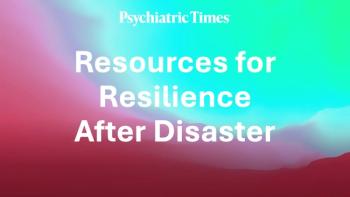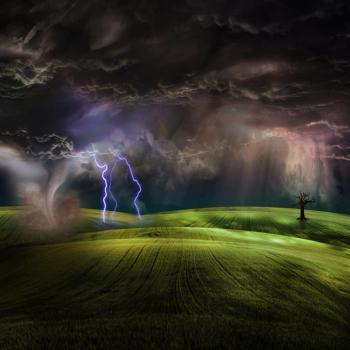
- Vol 31 No 5
- Volume 31
- Issue 5
Six Million and One
What differentiates this film from other Holocaust documentaries is that it documents the bonds between 4 Israeli-born siblings, recently bereaved, as much as it documents details about the fate of their father at the hands of Hitler’s henchmen.
There will be a screening and panel discussion of Six Million and One at the American Psychiatric Association Annual Meeting on Sunday, May 4, 7:00-10:00 pm at the Marriott Marquis Hotel, 1535 Broadway, New York. For more information about the presentation, check the APA meeting schedule; for more information about the film, go to
[[{"type":"media","view_mode":"media_crop","fid":"24228","attributes":{"alt":"Six Million and One, Holocaust-related film","class":"media-image media-image-right","height":"222","id":"media_crop_2279420336871","media_crop_h":"0","media_crop_image_style":"-1","media_crop_instance":"2066","media_crop_rotate":"0","media_crop_scale_h":"0","media_crop_scale_w":"0","media_crop_w":"0","media_crop_x":"0","media_crop_y":"0","style":"float: right;","title":" ","typeof":"foaf:Image","width":"150"}}]]With a title like Six Million and One (directed by David Fisher), we would expect to see a Holocaust film, straightforward and simple. By now, anyone who sees enough Shoah films knows that no two are alike. Each presents its own perspective and each is a product of its time, as much as it is a tribute to its subject matter.
There are “name brand” films that everyone knows and acknowledges as “authorities” about these atrocities: Sophie’s Choice (Pakula, 1982); Shoah (Lanzmann, 1985); Schindler’s List (Spielberg, 1993).
The Eichmann Trial of 1961, televised worldwide as Eichmann sat in a bulletproof glass booth, his words translated into every spoken language, primed audiences for Stanley Kramer’s dramatization of Judgment at Nuremberg (1961). Kramer’s award-winning film opened a few months after the trial ended. Marcel Ophüls’ documentary, The Sorrow and the Pity (1969), premiered a few years later.
Yet many Holocaust-related films are more personalized and particularistic than the box office blockbusters. Those films speak to select audiences. The past several years brought a “new wave” of Holocaust films that bear little resemblance to the earlier films and that rarely resemble one another. For instance, Inglourious Basterds (Tarantino, 2009) is far removed from The Reader (Daldry, 2008), except that each film chronicles lives or events related to the Shoah, one following biographical details fairly faithfully, while the other indulges in wild flights of imagination.
Defiance (Zwick, 2008), The Boy in the Striped Pajamas (Herman, 2008), and Adam Resurrected (Schrader, 2008) tell very different stories and take place in distinctive settings, even though each of those films was released in 2008. Sarah’s Key (Paquet-Brenner, 2010) and In Darkness (Holland, 2011) are Holocaust films, one set in Paris, the other in the sewers. There are heroes in these films, and there are victims, and there are so, so many villains.
Even the documentaries-or especially the documentaries-are unique. Inside Hana’s Suitcase (Weinstein, 2009) is set in Tokyo, at the Tokyo Holocaust center, while Hitler’s Children (Ze’evi, 2011) interviews adult children of top Nazi officials, one of whom emigrated to Israel and converted to Judaism, and others who are dismissive of the horrors of the Holocaust.
There is always an “angle” or a “hook” that differentiates one film (or one book) from another. What differentiates Six Million and One from other documentaries about the Holocaust is the fact that this film documents the bonds between 4 Israeli-born siblings, recently bereaved, as much as it documents details about the fate of their father at the hands of Hitler’s henchmen.
Now in late middle age, the protagonists in this documentary are all “adult children” of a Hungarian Jew who arrived in Israel after his internment in Austrian work camps during WWII. One sibling is an acclaimed documentary filmmaker, 2 brothers are attorneys, the sole sister is a writer. They speak (and sometimes shout) to one another in Hebrew. Occasionally they turn to English, especially when conversing with aged American ex-servicemen who liberated the camps. The voice of one quivers as he recounts memories of starving camp inmates who were so hungry that they ate cigarettes offered by American soldiers. Then they collapsed and died immediately after the soldiers fed them real food.
One might say that the filmmaker-brother began this project as a way to mourn his father, who left a diary that chronicled events that were never revealed during his lifetime. As spectators, we witness the bonding that evolves as the 4 siblings uncover unexpected links to their present and their past, through the conduit of their father’s diary. We also hear the sister’s insistence that we should live in the present, and enjoy the present, without harping on the past. That is the minority opinion, but still one that deserves serious consideration.
There are moments when the sight of the 4 siblings, sitting in a car, smiling and joking and speaking without any overt signs of sadness, recollects Jack Kerouac’s classic road trip story, On the Road (but without the booze or the bennies). In many ways, this film functions as a “coming of age” story for late middle-agers who lost a parent-but find each other again and forge new bonds as they set out on a treasure hunt of sorts, trying to piece together parts of a hidden past. One might say that this “Holocaust film” documents ad hoc family therapy as much as it documents one man’s experiences in the midst of this unspeakable evil.
The cinematography is striking and surprisingly poetic for such a profoundly disturbing subject. The film opens with a close-up of a spider web, signaling that spectators are about to be ensnared in the same web that captivated the siblings as they set out on their journey. Gazing at the web, and peering into the darkened portal beneath the web, we realize that time has passed, as if a spider has already woven a cobweb that obscures the secrets inside. We wonder if this web should be breached, or left in place, for the passageway cannot be closed once the seal is broken. Danger lurks within any web, with spiders hiding inside, waiting for prey, ready to bite.
At other moments, the camera shoots through rain drop–covered windows, to prepare us for the tears that will be shed over this sensitive subject matter. This is nature photography at its best, except for the fact that the film chronicles one of the most unnatural events imaginable: the deliberate deaths of 6 million persons of Jewish descent, whose lives were not considered worth living.
Articles in this issue
over 11 years ago
Introduction: Expanding Your Practice and Avoiding Burnoutover 11 years ago
Keys to Successfully Working With Primary Care Physiciansover 11 years ago
Fee Agreements: What Works, What Doesn’t- and How to Use Themover 11 years ago
An Update on the Maintenance of Certification Program for Psychiatryover 11 years ago
Integrative Management of Schizophreniaover 11 years ago
Course and Treatment Outcomes of ADHDover 11 years ago
Novel Research in the Neuropsychiatry of Anorexia NervosaNewsletter
Receive trusted psychiatric news, expert analysis, and clinical insights — subscribe today to support your practice and your patients.

















